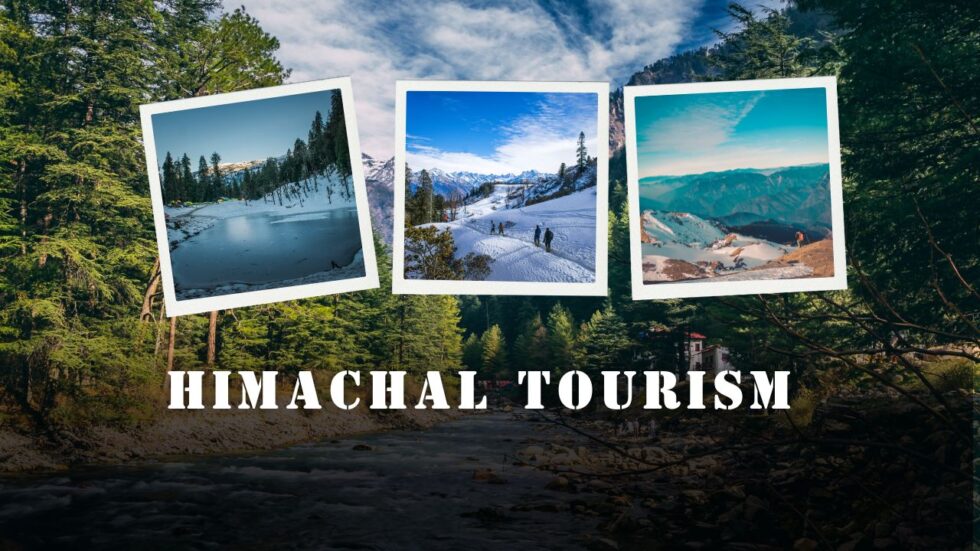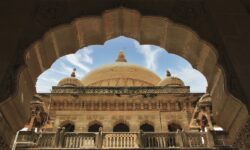
Introduction
Himachal Tourism represents one of India’s most enchanting travel experiences. Located in the lap of the western Himalayas, Himachal Pradesh is a state filled with snow-capped mountains, evergreen valleys, heritage towns, and traditional villages. What sets Himachal Tourism apart is its blend of quiet rural life, spiritual heritage, and year-round natural beauty that attracts visitors from across the world.
From adventure seekers and honeymooners to spiritual wanderers and solo backpackers, Himachal Pradesh offers something for every type of traveler. With well-connected roads, scenic railway routes, and increasing eco-tourism initiatives, it has become a favored destination not only for domestic tourists but also for international nature lovers.
The Charm of Himachal’s Hill Stations
When you think of Himachal Tourism, the first places that come to mind are the timeless hill stations like Shimla, Manali, Dharamshala, and Dalhousie. Each town carries a distinct vibe:
- Shimla: The capital city blends British colonial architecture, bustling markets, and scenic trails. Mall Road and Ridge Road remain popular tourist spots.
- Manali: Known for its snow activities in Solang Valley and spiritual charm in Old Manali, this town draws thrill-seekers and peace lovers alike.
- Dharamshala and McLeodganj: These towns offer a unique Tibetan influence, being home to the Dalai Lama. Ideal for those looking to blend culture with mountain serenity.
- Dalhousie: Often regarded as a quiet retreat, Dalhousie’s colonial buildings and pine-covered landscapes make it perfect for relaxed vacations.
These destinations remain the heartbeat of Himachal Tourism, with year-round appeal thanks to distinct summer and winter offerings.
Seasons and Best Time to Travel
Himachal Tourism adapts beautifully to every season:
- Spring (March to May): Ideal for trekking and sightseeing, this season brings blooming flowers, pleasant weather, and clear skies.
- Summer (June to August): Hill stations offer a cool respite from the plains. Summer is also perfect for river rafting and mountain biking.
- Monsoon (August to September): While landslides are a concern, monsoons paint the landscape lush green. Ideal for offbeat travel and photography.
- Winter (October to February): Snowfall transforms towns like Manali, Kufri, and Narkanda into winter wonderlands, ideal for skiing and snowboarding.
Understanding the seasonal shifts can help you plan your Himachal Tourism experience to suit your interests, whether you’re chasing snow or sunshine.
Adventure and Outdoor Activities
For many, Himachal Tourism is synonymous with outdoor fun. The state offers an unmatched variety of adrenaline-pumping activities:
- Trekking: Famous trails include the Hampta Pass, Triund, Bhrigu Lake, and Pin Parvati Pass. These treks range from beginner to expert levels.
- Paragliding: Bir Billing is globally known for its ideal conditions. Flying over the Kangra Valley is a memorable experience.
- River Rafting: The Beas and Sutlej rivers offer rafting spots around Kullu and Tattapani.
- Skiing and Snowboarding: Solang Valley and Narkanda welcome snow sports lovers each winter.
- Camping and Bonfires: In places like Kasol, Tirthan Valley, and Sangla, outdoor camping under the stars offers a true connection with nature.
Adventure tourism plays a significant role in Himachal Tourism, making it a prime location for thrill-seekers.
Spiritual Trails and Sacred Spots
Beyond adventure, Himachal Tourism offers a deeply spiritual side. The region is dotted with centuries-old temples, monasteries, and sacred lakes:
- Temples: Jwala Devi, Chintpurni, Naina Devi, and Baijnath temple are important Hindu pilgrimage sites.
- Monasteries: Tabo, Key, and Dhankar monasteries in Lahaul-Spiti are key centers of Tibetan Buddhism.
- Sacred Lakes: Rewalsar, Parashar, and Manimahesh lakes attract pilgrims and trekkers alike.
For those seeking inner peace, spiritual Himachal Tourism offers pathways that connect tradition, myth, and mindfulness.
Food, Culture, and Local Life
Himachal Tourism isn’t just about nature—it’s about experiencing a different way of life. Traditional Himachali hospitality is warm and deeply rooted in family, farming, and festivals.
- Cuisine: Dishes like Siddu, Chana Madra, Babru, and Dham meals offer a taste of authentic Himachali kitchens.
- Fairs and Festivals: The Kullu Dussehra, Lavi Fair in Rampur, and Minjar Mela in Chamba bring color, dance, and music to the hills.
- Handicrafts and Woollens: Himachal is known for handwoven shawls from Kullu and Kinnaur, wooden carvings, and Kangra paintings.
Himachal Tourism allows travelers to experience culture not as a performance but as a way of living.
Offbeat Gems of Himachal
While the popular towns are well-known, the true beauty of Himachal Tourism often lies in its lesser-known villages and valleys:
- Tirthan Valley: A quiet retreat near the Great Himalayan National Park. Ideal for fishing, nature walks, and digital detox.
- Spiti Valley: A stark, high-altitude desert with ancient monasteries and moonscape views. A favorite among bikers and photographers.
- Chitkul and Sangla: Near the Indo-Tibetan border, these villages offer breathtaking views and a peaceful atmosphere.
- Barot: A quaint village tucked in Mandi district. Great for trout fishing and peaceful getaways.
- Jibhi and Shoja: These forested hamlets in Banjar Valley offer river walks, wooden homes, and slow travel charm.
These offbeat destinations are a growing part of Himachal Tourism, appealing to those looking to avoid crowds and dive deeper into rural life.
Wildlife and Eco-Tourism
Nature lovers will find Himachal Tourism rich in biodiversity. The region has several protected areas where travelers can experience the native flora and fauna:
- Great Himalayan National Park (UNESCO World Heritage Site): Offers trekking routes and sightings of rare species like the Himalayan tahr, snow leopard, and musk deer.
- Pin Valley National Park: Known for its stark beauty and high-altitude wildlife.
- Renuka Wildlife Sanctuary: Ideal for family outings with easy access and serene surroundings.
- Chail Sanctuary: Located near Shimla, this forested area is home to deer, wild boars, and various bird species.
Eco-tourism initiatives are growing across Himachal, with homestays, organic farms, and zero-waste projects becoming part of the state’s responsible tourism model.
Connectivity and Travel Tips
Himachal Tourism is supported by improving connectivity across air, rail, and road:
- By Air: Airports in Shimla, Kullu (Bhuntar), and Kangra (Gaggal) connect to Delhi and Chandigarh.
- By Road: A robust network of highways and HRTC buses allows access to almost every corner of the state. Self-drive options are popular for flexibility.
- By Train: The Kalka-Shimla toy train offers a scenic UNESCO-listed ride through tunnels and hillsides.
Travel Tips:
- Carry warm clothing even in summer, as nights get cold in higher regions.
- Book accommodations in advance during peak season.
- Respect local customs and avoid plastic usage.
- Local guides can add value in treks and cultural spots.
- If you’re driving, check weather and road conditions, especially in monsoons or snow seasons.
Why Himachal Tourism Remains a Top Choice
What makes Himachal Tourism stand out is not just the grandeur of the mountains, but the gentle pace of life it offers. Whether you’re watching sunrise in a quiet village, sipping tea in a snow-covered town, or walking through apple orchards during harvest season, every moment feels unhurried.
This is a place where hospitality is sincere, nature is raw and respected, and the balance between the past and the present still holds. Himachal Tourism invites travelers not just to see, but to stay, absorb, and connect.
Final Thoughts
Himachal Tourism continues to grow, not only in popularity but in depth. With increasing focus on sustainable travel, local livelihood, and environmental awareness, the region stands as a model for responsible hill tourism in India.
Whether you’re in search of peaceful views, meaningful silence, or unforgettable adventures, Himachal Pradesh has a way of offering it without noise. It invites visitors to step away from the rush and return with something more valuable than just pictures—clarity, connection, and calm.








